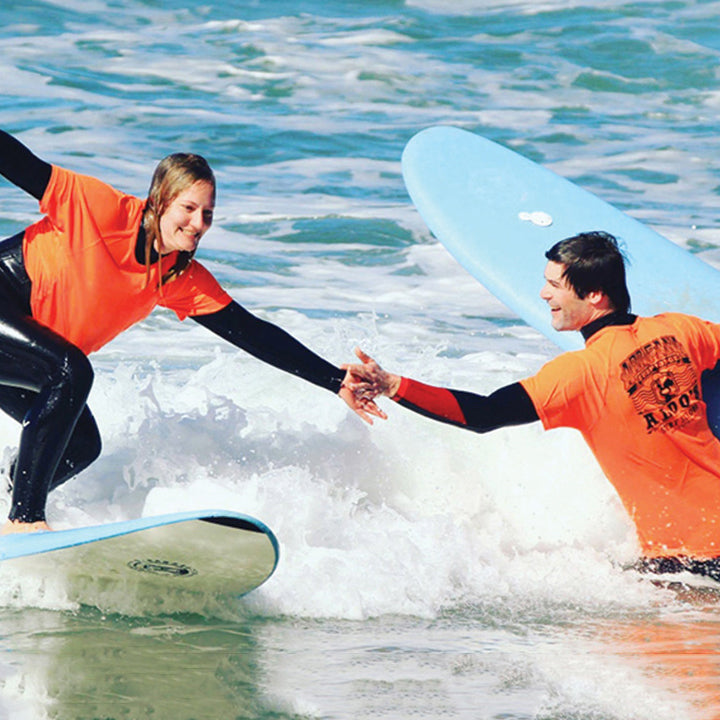
A Beginner's Guide to Choosing the Best Surfboard

For many, the idea of riding the waves conjures up images of freedom, thrill, and connection with nature. Surfing is not just a sport; it's a way of life. Whether you're inspired by the adrenaline rush or seeking a deeper connection with the ocean, learning to surf is an exhilarating journey. And at the heart of this journey lies a crucial decision: choosing the right surfboard, especially for beginners.
Surfboards come in various shapes, sizes, and materials, each catering to different skill levels and wave conditions. For novices stepping into the world of surfing, the array of options might seem daunting. But fear not! Understanding the basics can make this decision-making process smoother and more enjoyable.
The Ideal Characteristics for Beginner Surfboards:
-
Size and Volume: Beginners should opt for boards with ample volume. A higher volume means more buoyancy and easier paddling. Longboards and foam boards are excellent choices due to their generous volume, offering stability and forgiveness as you master your balance and paddling technique.
-
Soft-Top or Foam Boards: These boards, often recognized by their foam construction and soft deck, are designed with safety in mind. They are forgiving, making wipeouts less painful and reducing the chances of injury. The soft-top surfboards also provide excellent stability, crucial for beginners finding their balance.
-
Length: Longer boards, typically over 8 feet in length, are ideal for beginners. They offer better stability, easier paddling, and catching waves becomes more manageable, allowing beginners to focus on learning the fundamentals.
-
Shape: Wide, rounded nose boards are more forgiving for beginners. A rounded nose aids in smoother paddling and prevents nose-diving, common for those still mastering wave entry.
-
Fin Setup: For novices, a larger, soft fin setup is preferable. These setups provide more stability and control, making it easier for beginners to navigate the waves.
Popular Surfboard Types for Beginners:
-
Foam Boards: Also known as soft-tops, foam boards are made of soft foam materials, making them buoyant, stable, and safe. They're excellent for building confidence and mastering the basics.
-
Longboards: Longboards are typically longer than 8 feet and offer ample stability and buoyancy, making them perfect for beginners. They're easier to paddle and catch waves, allowing newcomers to focus on their technique.
-
Mini Malibu or Funboards: These boards strike a balance between longboards and shortboards. They offer stability like longboards but are slightly shorter and more maneuverable, making them a good transition as beginners progress.
Choosing the right surfboard is a personal decision, influenced by factors like individual preferences, body weight, and the specific waves you'll be surfing. Renting different types of boards or seeking advice from seasoned surfers or instructors can provide valuable insights before making a purchase.
As a beginner, investing in a durable, reasonably priced board suited to your skill level will kickstart your surfing journey on the right foot. Remember, the best surfboard for a beginner is one that fosters confidence, safety, and fun in the waves. So, embrace the learning curve, paddle out, and ride the waves as you embark on this thrilling adventure called surfing!
If you're after any more info or have any questions about anything then please drop us an email at shop@exitsurf.com

